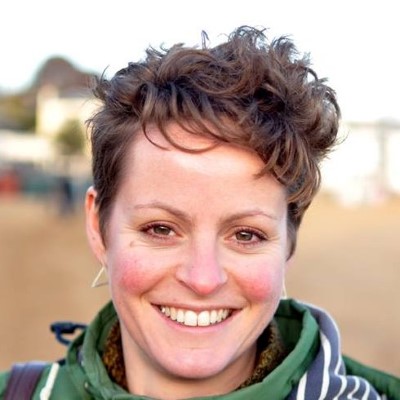Dr Elizabeth Webb recently wrote about R, the number we’ve been hearing so much about, and why it’s important to keep it below 1. This week she discusses how R is estimated, and what can be done to keep it low.
While, in theory, R is a precise figure, it can be difficult to pin down. R can change over time, as the amount of social contacts we all have changes, and as the number of people who have had coronavirus increases. R can also differ between settings and between geographical areas.
To know exactly what R is, we would have to find out how many people every person with coronavirus passed it to, and work out the average number from that. At the height of an epidemic this is very difficult to do, and the moment it isn’t possible in the UK. As we don’t have this information, how is R being estimated?
What is R?
Dr Webb explains what R is, and what that means for the coronavirus outbreak and the actions the Government is asking us to take.
How can we put a number on R?
Several groups of scientists, based in universities across the UK and at Public Health England (PHE), are estimating R. One of the subgroups of SAGE (the Government’s Scientific Advisory Group for Emergencies) looks at all the estimates of R and agrees a range within which they think R lies. At the moment, they estimate that R is somewhere between 0.7 and 1, meaning that every 10 people with coronavirus will pass it on to somewhere between 7 and 10 people between them. The coronavirus epidemic in the UK should be steady, and possibly gradually slowing down.
The main information the scientists are using to estimate R is the number of people who have recently been admitted to hospital with coronavirus, and how many people have recently died of coronavirus. Both these sources of information have problems: they only tell us about the most serious cases of coronavirus, and about those infections that happened a few weeks ago, not those from recent days. As R can change over time, scientists need to use this information in mathematical models to estimate what R is now. These models have a degree of uncertainty, which explains why there is not a precise estimate of R, but a range.
Can we get better at estimating R?
The trouble is, if we’re uncertain exactly what R is and when it increases or decreases, we can’t know whether it’s sensible to loosen guidelines on social distancing. If R goes above 1 the epidemic starts to grow again, and we need to know this as soon as possible. It’s therefore important to minimise the degree of uncertainty in the mathematical models used to estimate R.
In order to reduce this uncertainty, the Office for National Statistics, along with the Department for Health and Social Care and the Universities of Manchester and Oxford, are setting up a study to provide more information. The study will test people living in more than 100,000 households across England for coronavirus, and repeat tests on them every week or every month. This will give good information on how coronavirus is spreading, without the delays that information on hospitalisations and deaths have. It will also, therefore, help make the estimates of R more precise.
Keeping R low
As discussed in last week’s piece, R is dependent on characteristics of the disease itself, and on the way people behave and how many in the population are susceptible to the disease. If R is lower than 1 the average person who has coronavirus passes it on to less than 1 other person. If this is maintained for long enough the coronavirus epidemic will fizzle out.
Herd immunity?
One way to keep R below 1 is by achieving the much-discussed ‘herd immunity’. Herd immunity is achieved when there are few enough people susceptible to the disease that an epidemic can’t be sustained. The larger R0 is, the larger the proportion of the population that needs to be immune. Because R0 for coronavirus is about 3, we’d need around 2 in 3 people to be immune to achieve herd immunity.
This can happen in 1 of 2 ways. Either so many people get the disease that there eventually aren’t many left to pass it on to – coronavirus is too harmful a disease to safely aim for herd immunity this way – or a vaccine can be used to make enough of the population immune. As discussed in a previous article, scientists are working to develop a vaccine, but this is a long and uncertain process.
Keeping R down without a vaccine
However, without a vaccine, there are lots of things we can do to reduce R, including reducing our social contacts by continuing social distancing. As restrictions on our activities loosen and our social contacts increase, this will tend to increase R. We therefore need to do other things to keep R down:
- Ensuring we self-isolate to avoid passing it on if we feel unwell with coronavirus symptoms. The Government list fever, persistent cough and loss of sense of taste or smell as symptoms, though the WHO (World Health Organisation) also mentions tiredness, shortness of breath and other symptoms.
- Ensuring we wear a face covering when we are in enclosed public places where social distancing is difficult. Even a homemade face covering can reduce our chances of passing on coronavirus to other people if we are in the stage of the disease when we are contagious but yet to feel unwell.
Soon we will also be able to ‘test, track and trace’ new infections, which is the most powerful way of reducing R in the absence of a vaccine. Tracking and tracing can be done using a smartphone app or more traditional methods, whereby people with coronavirus are asked who they’ve had contact with and those people are telephoned to let them know.
Tracking and tracing reduces R because people who have had contact with someone with coronavirus are asked to self-isolate before they can become contagious, minimising their chances of passing it on.

More articles by Dr Webb
Dr Elizabeth Webb is a Senior Research Manager at Age UK. She has an MSc in Epidemiology from the London School of Hygiene and Tropical Medicine and a PhD in Social Epidemiology from University College London.
- What's the science behind the Government's guidelines?
- Can we predict how coronavirus will progress?
- Why are older people more at risk from coronavirus?
- How can we recognise when we have coronavirus?
- How close are we to a vaccine?
- What is R?
- How do we keep R below 1?
- What's the updated picture of coronavirus and older people?
- Is there an increased risk of coronavirus for BAME older people?
- What is k and who are the super-spreaders?


